Permanent Magnet Alternators (PMAs) are a flagship product of modern solutions. At the same time, they have received good reviews for being efficient, sustainable, and versatile in various areas of application. People who can benefit from this technology range from electronics enthusiasts to renewable energy supporters, and all the way down to engineers who need a steady and trustworthy power generation source. Information on PMA operations and their advantages, among other things, is a must. This is a detailed yet easy-to-read and user-friendly guide that focuses on PMAs and their global utilization. At the end of the tutorial, the reader will understand why the use of these alternators in systems that require long-lasting and energy-saving operation is continuously growing. So, be excited about what we are going to explain regarding the scientific arguments concerning PMAs and their ability to alter power systems in one way or another.
Fundamental Principles of Permanent Magnet Alternators
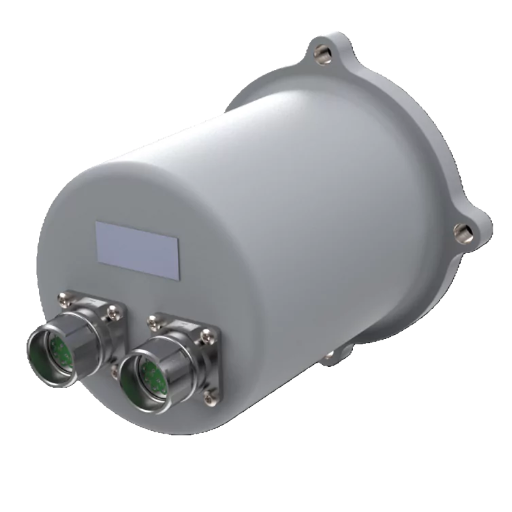
In the operation of PMAs, the process is determined by the electromagnetic induction principle. These motors utilize permanent magnets to generate a magnetic field, thereby eliminating the need for external electrical power or field coil windings. Rotating the rotor (which is the part that houses the permanent magnets) in the stator causes the generation of a magnetic flux. This flux, in turn, causes the stator windings to create an electrical current, thereby making the machine act as a constant source of electricity. One of the main reasons PMA, as a technology, is so durable is that the used generator coil is composed of simple parts. Additionally, the fact that they do not require an additional supply for excitation is also a key factor in their energy efficiency.
How Permanent Magnet Alternators Work
Permanent Magnet Alternators (PMAs) are a good choice for industrial and renewable energy applications. The elimination of external excitation systems makes PMAs energy-efficient, and this is a primary advantage among many others that attracts many players in the industrial and alternative energy markets to the machines. Skilled in their design and benefiting from their lightweight nature, they are the perfect elements in any system that has restrictions on both space and weight.
Furthermore, PMAs are generally more dependable compared to other types of machines, as they have fewer moving parts and experience less wear and tear, resulting in less maintenance time and a longer lifespan. By having the ability to perform efficiently at a wide range of speeds, they maintained their matchless characteristics for a long time. For this reason, they are suitable for wind turbines, small-scale hydroelectric generators, and portable power solutions. Additionally, improvements in magnetic materials have enabled PMAs to remain competitive, offering higher power density and improved overall performance in today’s energy systems.
Key Components of Permanent Magnet Alternators
- Permanent Magnets – High-performance magnets, produced from materials such as neodymium-iron-boron (NdFeB), are utilized to create a robust and stable magnetic field. These magnets play a vital role in the stator windings by inducing electromotive force (EMF) with minimum losses.
- Stator – The immobile part that serves as the dwelling of windings. The stator is the one at fault when it comes to the production of electrical power output, which occurs whenever the magnetic lines of force produced by the rotor pass through it. The high quality of the stator windings can increase the alternator’s efficiency and minimize heat losses.
- Rotor – The moving part of the alternator, which, among other things, houses the permanent magnets. The rotor’s design and speed are crucial because they are the primary factors that determine the output voltage and frequency.
- Bearings – Bearings are the components that help the smooth rotation of the rotor by providing minimal friction and wear. They are highly responsible for ensuring the alternator operates for longer and achieves more consistent performance.
- Shaft – The primary part that is linked to the rotor and is used to drive the alternator through external mechanical energy sources like wind, water, or engines.
- Housing – The housing is designed to be highly resistant to all rough weather conditions, with all internal parts of the device remaining safe. Housings with such features are excellent for improved heat dissipation, thereby protecting the device against overheating.
Comparison with Traditional Alternators
| Parameter | Permanent Magnet Alternators | Traditional Alternators |
|---|---|---|
| Efficiency | Higher due to reduced energy losses | Lower due to field excitation losses |
| Maintenance | Minimal maintenance required | Regular maintenance needed |
| Power Output | Consistent at varying speeds | Fluctuates with speed |
| Initialization | Self-exciting, no external energy needed | Requires external excitation to start |
| Cost | Higher upfront cost | Generally lower upfront cost |
| Durability | Longer lifespan with fewer wear points | Shorter lifespan due to wear components |
| Weight | Typically lighter | Comparatively heavier |
| Complexity | Simpler design, fewer components | More complex with rotor windings |
| Magnetic Field Source | Permanent magnets | Electromagnets |
| Energy Conversion Efficiency | Superior | Less efficient in energy conversion |
Advantages of Permanent Magnet Alternators
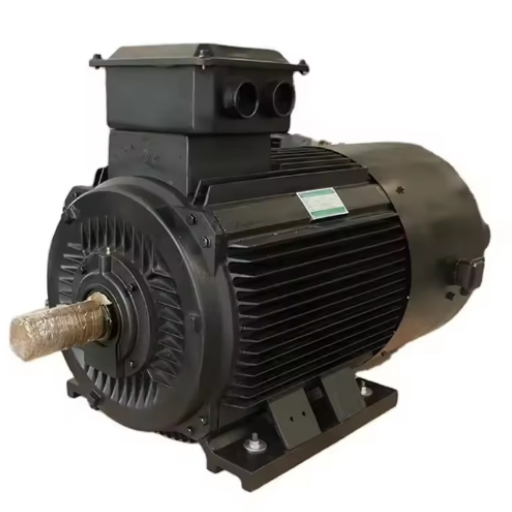
High Efficiency
Permanent magnets are used as the rotor in permanent magnet alternators, which steadily convert energy with high efficiency, minimizing energy losses during operation.
Durability
Nothing is less to be serviced, and there is also less maintenance to be carried out on alternators with fewer wear-and-tear parts, hence they are more durable.
Lightweight Design
Simple construction and the non-use of heavy parts make them lightweight, making them suitable for weight-critical applications.
Reliable Performance
The field of permanent magnets is stable and uniform because it does not depend on heavy parts; thus, with the use of permanent magnets, there is no doubt about the factual and convenient operation under various conditions.
Lower Operating Costs
Permanent magnet consumption is the primary factor in energy use, but this does not require any additional application cost-effectively.
Efficiency and Performance Metrics
When defining the efficacy and performance of any product, the two factors that cannot be overlooked are the rate at which the product consumes energy and the consistency of the output it supplies. In such cases where magnetic materials are used, energy consumption is considerably less due to the absence of the need for the magnet to be externally energized. This, in turn, means that the operator will pay even less for electricity, which can be further evaluated using standard industry metrics, such as the coefficient of performance (COP) and energy conversion rates. In contrast, the lack of output consistency is evident from the varying performances of a product over time and under different environments. Even though permanent magnets have been known to exhibit high levels of consistency in their magnetic properties under all harsh conditions, including extreme temperature ranges and external pressures, there is still a need for monitoring, where a product serves its purpose and no other.
Size and Weight Comparisons
Their size and weight significantly influence the assessment of magnets for different uses, as these factors play a crucial role in determining their feasibility and effectiveness. One of the most significant advantages attributed to permanent magnets, such as neodymium magnets, is their compact size combined with high magnetic strength; thus, they are preferred for applications where space is a constraint, e.g., smartphones, medical instruments, and the motors of electric vehicles. On the other hand, electromagnets are usually larger because they require additional components, such as coils and power sources. However, they are very effective in this regard because they can adjust the magnetic force according to the requirements.
Recent breakthroughs in the field of materials science have had a profound impact on the size-to-strength ratio of permanent magnets, allowing them to be readily miniaturized without any reduction in performance. You can compare a Neodymium magnet to a Ferrite one, and the former will generate stronger magnetic fields, although this doesn’t mean the latter is the same. A smaller neodymium magnet is a source of greater strength, and this is a key factor for industries to consider when applying it to weight-saving markets such as aerospace and portable electronics. With these applications, the market is expected to see an increase in demand.
Brushless Design Benefits
- Higher Efficiency: By reducing energy loss to a minimum and maximizing performance, brushless motors are often more energy efficient than brushed motors, sometimes achieving efficiencies of 85% to 90% or higher.
- Longer Lifespan: With no brushes, there are significantly fewer mechanical parts that wear out, resulting in a motor lifetime that can be up to 50% longer compared to brushed motors.
- Reduced Maintenance: The brushes not used in the motor imply a need for fewer replacements, which indirectly means a reduction in maintenance and operating costs.
- Compact and Lightweight: Due to their advanced construction, brushless motors are comparatively small and lightweight, making them suitable for applications such as drones, electric vehicles, and portable devices.
- Improved Performance: Remote control and tone control are more precise than before, allowing the motors to operate at low speed and high torque, and remain stable despite variable loads.
- Low Noise Operation: One of the advantages of these motors’ operation is their very low noise level, as they do not have the noisy commutators that can be heard moving up and down; thus, they do not disturb the peace in noise-sensitive environments.
Common Applications of Permanent Magnet Alternators
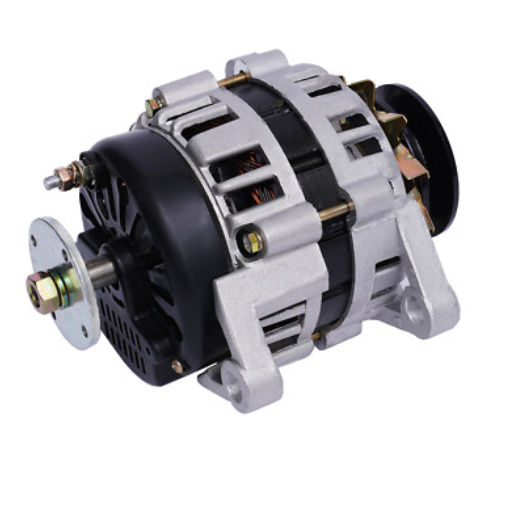
Permanent Magnet Alternators (PMAs) have found applications in almost all industries due to their superior performance and low maintenance requirements. The following are some of the most common applications:
- Renewable Energy Systems: PMAs are primarily used for wind and hydro, where mechanical energy is converted into electrical energy by the alternator, resulting in a continuous power production system that is sustainable.
- Automotive Industry: They are more likely to be installed in, combined or full-fledged, cars that run on electricity, where the power generation is mainly for battery charging and other accessories.
- Aerospace and Defense: PMAs provide the actors with levitating and other critical applications that require the necessary electricity, where saving fuel and increasing the performance of these applications are the primary requirements.
- Portable Generators: These machines are the most useful power generators, especially in cases where many people rely on the grid’s power supply, as they can be easily carried to the site and started up in no time.
- Industrial Equipment: They are responsible for powering machinery, robotics, and other equipment used on the factory floor, which is why they are indispensable for the precise and high-performance of various manufacturing operations.
These versatile alternators are still at the heart of today’s technological evolution.
Renewable Energy Systems
Permanent Magnet Alternators (PMAs) are increasingly being utilized in the renewable energy industry, offering practical and environmentally friendly alternatives for power generation. Wind turbines are the primary users of PMAs, which enable these machines to produce high-quality electrical energy from wind and are also very reliable, with minimal mechanical losses. The previous reliable technology, featuring a brush and commutator-free design, offers the advantage of maximum life and low maintenance simultaneously —a great combination that would be very useful in remote or harsh environments, such as offshore wind farms. Additionally, PMAs are paired with hydroelectric power generation, along with micro-hydro systems. In this case, the energy from the water is used to drive the alternator, providing a consistent energy output.
Automotive Applications
- Electric and Hybrid Vehicles: The PMAs serve as a link between mechanical energy generated by the engine and provide the energy for the battery systems and ancillaries in the vehicle.
- Starter-Generator Systems: The PMAs are increasingly found in integrated starter generator systems, where both the functions of the starter motor and alternator are combined to achieve a very efficient engine and reduced fuel consumption.
- Eco-Friendly Idle Stop-Start Technology: Cars equipped with idle stop-start technology feature PMAs that enable quick and reliable engine restarts, thereby enhancing fuel economy and reducing emissions.
- Advanced Driver-Assistance Systems (ADAS): Certain AI-based features, such as parking sensors, lane assistance, and adaptive cruise control, among others, require a significant amount of power to remain operational all the time. The PMAs can efficiently manage this power supply, provided that the PMA-generator set operates at a relatively steady rate.
- Lighting Systems: PMAs are utilized for lighting systems, including but not limited to headlights, dashboard displays, and similar components, in vehicles where stable performance is required even under varying load conditions.
Industrial and Commercial Use Cases
One of the key applications of Permanent Magnet Alternators (PMAs) is their high efficiency, long operating life, and stable electricity supply, which results in cleaner energy production. More specifically, this is the case in wind sectors, where PMAs are the devices that convert the kinetic energy of the wind into electric power, making wind power the next green solution on the renewable energy path. To provide another example, in the critical infrastructure of medical facilities, data centers, and communication networks, backup power systems are employed as a precautionary measure to ensure continuous operation and provide the necessary power.
In various industrial systems, PMAs find their applications in manufacturing, including the movement of materials using conveyors, cutting of materials using lasers or elevators, or packaging materials or the steel industry. Moreover, they are widely used in the commercial aircraft industry, where they are part of the aircraft power supply system as a backup for the primary electrical power generation system. The alternators have become not only more energy-efficient but also more reliable for their various applications in the business environment, thanks to the rise of advanced technologies.
Key Features to Consider When Selecting a Permanent Magnet Alternator
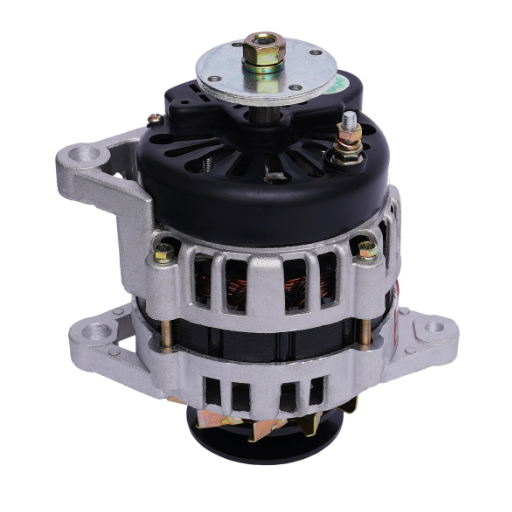
Power Output and Efficiency
Ensure that the alternator produces the required power output for your specific needs and is also very efficient. This approach will ensure that energy consumption is reduced and performance is enhanced.
Durability and Build Quality
Search for materials and construction methods that are designed to withstand extremely tough conditions, ensuring resistance to extreme temperature fluctuations, vibrations, or continuous operation, thereby guaranteeing long-term reliability.
Voltage Regulation
Think about alternators that have a strict and uniform regulation of voltage to shield the equipment and systems connected from variations.
Size and Weight
Check if the alternator is the right size and weight for your site, especially in cases where there is a space or weight limit.
Maintenance Requirements
Opt for designs that require minimal maintenance to minimize downtime and, at the same time, reduce operational costs.
Compatibility with Systems
Ensure that the alternator is compatible with your system, allowing it to integrate smoothly and operate with maximum efficiency.
Output Voltage and Power Ratings
When selecting an alternator, it is crucial to determine the correct voltage and power capabilities required, which must align with the application’s usage. Alternators are engineered in a way to give different voltage outputs that can be classed as low voltage (for example, 12V, 24V, etc., and very typical in automotive and small tools applications) or high voltage (for example, 120V, 240V, etc., which are very usual in the domestic and industrial sectors). Always analyze the power of your system in kilovolts (kW) and kilovolt-amperes (kVA) to ensure the alternator’s capacity aligns with total load requirements, considering peak or surge demands. Furthermore, checking the efficiency ratings and load handling capabilities may also help in choosing a device that is both reliable and durable for long-term use. Getting an alternator that has a little bit more power and voltage than your needs requires gives a more secure and, quite frankly, larger pipe for operations.
RPM and Efficiency Considerations
The relationship between revolutions per minute (RPM) and alternator efficiency is a significant factor in maximizing performance. Alternators are usually manufactured to run efficiently at RPMs within a specific range, which is where the power output and fuel consumption are in a reasonable tradeoff. An alternator operating below or above its optimum RPM can result in inefficiencies such as high fuel consumption or low power output. The alternator technology of today is typically designed to correct voltage and regulate speed under various loads automatically. Besides, the manufacturer’s manual shall be the primary source for settiương the proper RPM according to the alternator model. Listeners of the latest trends in technology can expect to see advanced alternator technologies with features such as self-regulation and power output sharing across various consumer applications.
Winding Types and Configurations
The designs and layouts of windings in alternators have a significant impact on the performance, efficiency, and suitability for application of the devices. Alternators commonly employ two types of windings: lap winding and wave winding. Lap winding comprises several parallel paths and is the preferred choice for low-voltage, high-current applications. Conversely, wave winding is less flexible in its paths, but it delivers a higher series voltage output, making it more suitable for high-voltage, low-current systems.
Many contemporary alternators employ innovative winding patterns to achieve high-efficiency output with minimal energy losses during operation. Examples of such configurations are the star (Y) and delta (Δ), which are among the most commonly used methods to distribute the phase voltage and current optimally in three-phase alternators. The star configurations offer excellent insulation properties; therefore, they can withstand lower phase voltages. Conversely, delta configurations are well-suited for high output currents. Moreover, these winding configurations typically vary according to the specific requirements of target industries, such as automotive or power generation segments, which ensures the highest reliability and adaptability of the output.
Maintenance and Troubleshooting Tips
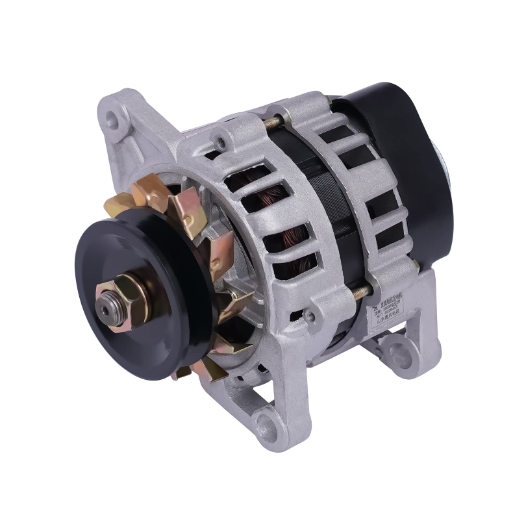
Regular Inspection
Inspect for visible physical signs, such as weak, worn, oxidized, or loose bonds in the frame and parts where the alternator coil is wound, as well as in its connecting parts, regularly. It can prevent the failures that might cost us our lives in the long run.
Clean the Components
Regular maintenance of the alternator is essential to prevent damage caused by dust, grease, and debris. Use recommended cleaning materials to avoid harming the delicate components.
Test Voltage Output
To identify any difference in the newness of an engine, regularly use a multimeter to measure and ensure the output voltage it provides is within the manufacturer’s specifications.
Address Unusual Noises
One should not wait for any unusual sounds to be heard, but investigate them immediately, as these might be due to lubrication issues or alternator system misalignments.
Inspect Insulation
By checking the windings for insulation wear or damage, you can identify close and dangerous working conditions. Therefore, sound insulation must be used in the operation of such machinery, particularly in industrial settings.
Replace Worn Bearings
Keep a close watch on the bearings, as they can fail if worn out or damaged, potentially leading to the entire system’s failure. Be ready to replace them at the time when it is appropriate.
Troubleshooting Common Issues
Common alternator problems are best dealt with by a methodical approach, which will surely give you a correct and efficient remedy that can be worked on:
Voltage Fluctuations
Voltage instability can be a sign of a problem, such as a faulty voltage regulator or damaged diodes. One should inspect the regulator for any signs of wear and measure the diode with a multimeter to ensure it conducts electricity without any breaks.
Overheating
Overheating is a common issue caused by insufficient air intake or a blockage in the cooling system. Look around the air flow ducts and ensure the fan is working correctly, which may be hazy and obstructed with debris. Additionally, check for the overloading condition that might exceed the alternator’s capacity.
Low Output or Failure to Charge
This problem may be related to weak or oxidized connections. The batteries’ connections and wires should be thoroughly examined for visual evidence of corrosion. Additionally, the alternator’s performance should be checked using the right tools. If any damage is suspected, the component should be realigned or replaced with a proper repair.
Unusual Vibrations or Noise
If any abnormal vibration or noise is observed, it could be due to one of the following causes: one of the rotor shafts is imbalanced, one or more bearings are worn out, or the component’s misalignment. Investigate these possible root causes by checking the balance of the shaft and wear, especially the misalignment of the components, before the efficiency of the whole machine is affected.
The effort initiated to address and rectify the drawbacks mentioned earlier can significantly enhance both the lifecycle and operational stability of industrial or commercial alternator systems.
Ensuring Long-Term Reliability
Keeping track of the alternator’s performance metrics is an essential step in ensuring the machinery’s long-term dependability. Some crucial indicators, such as voltage output, current levels, and temperature limitations, are key figures that should be monitored daily to detect early signs of inefficiency or impending machinery failure. Today, advanced diagnostic tools and sensors can enable the continuous monitoring of machinery health by providing real-time data, which maintenance teams can use to detect anomalies earlier and reduce downtime. With the help of these tools, it is also possible to accurately predict the maintenance needs of the equipment, resulting in a proactive approach to its upkeep.
Predictive maintenance strategies, fueled by modern analytics and technology, are transforming the maintenance of equipment. Machine learning algorithms can analyze operating conditions and predict potential issues in advance, thereby eliminating the need for breakdown maintenance. An example of this is the use of tools such as vibration analysis and thermal imaging, which can be highly sensitive to changes in equipment performance and are therefore invaluable tools for the maintenance team in monitoring it from an early stage. With these strategies, routine checks can be implemented to provide a comprehensive framework, ensuring the alternator operates at its peak and remains dependable for years to come.
Reference Sources
-
Design and Performance of a Segmented Stator Permanent Magnet Alternator for Aerospace
- Summary: This study focuses on redesigning a permanent magnet alternator with a segmented stator to minimize iron losses and enhance production efficiency. The research compares bonded lamination stacks with those held together by a punched notch.
-
- Summary: This paper presents a dual-winding permanent magnet alternator designed to improve power output and voltage regulation in hybrid electric vehicles (HEVs). The alternator features an auxiliary winding sharing slots with the main winding, enabling better flux control and voltage regulation.
Frequently Asked Questions (FAQs)
Q: How does a brushless alternator differ from a conventional alternator?
A: A brushless alternator, for example, a permanent magnet generator, makes the disappearance of the brushes and slip rings unnecessary, which is typical for conventional alternators. Thanks to this effort, the maintenance necessity is decreased, and the total efficiency of the system is improved because the energy loss caused by friction is also reduced. Brushless alternators utilize permanent magnets as a source of the magnetic field, which enables smoother operation and improved performance at low RPMs. Moreover, they can have a more stable voltage output, which makes them suitable for applications that require the most reliable power source, such as those in remote areas.
Q: What is the role of a voltage regulator in permanent magnet generators?
A: The voltage regulator plays a key role in the continuous running of a permanent magnet generator (PMG) by guaranteeing that the output voltage is the same. By varying the load current to the rotor, the regulator always intervenes, and it even adjusts speeds as necessary. This control is a protective measure designed to safeguard connected devices from harmful voltage variations, which are a significant cause of equipment damage and failure. The voltage regulator, together with a rectifier, achieves a complete conversion of AC power into usable DC voltage at various uses (i.e., battery charging on one hand and power supply for electronic devices on the other hand).
Q: Can a permanent magnet synchronous generator operate at low RPM?
A: Indeed, a permanent magnet synchronous generator can operate with high efficiency when the rotation number is small, which is why it is often used in wind power and water power applications. The manufacture of these generators is designed to provide electrical energy even at the slowest speeds, as they are built using permanent magnets and windings that are wound in a specialized manner. Thus, the entire transformation process is highly effective, converting mechanical energy to electrical energy at lower velocities. At the same time, one can expect consistent performance and high power in renewable energy systems. The presence of rare earth magnets is another reason for their efficiency and high power output at low RPMs.
Q: What are the advantages of using a three-phase permanent magnet generator?
A: One great advantage of three-phase systems when compared to single-phase ones is the more efficient and power-stable operation. They can provide a power supply that is less susceptible to voltage fluctuations because they generate three separate alternating currents. The design also permits easier load balancing and accommodates additional electrical loads without straining the system. Furthermore, the relatively smaller size and lighter weight often make three-phase PMGs more favorable than their single-phase equivalents. This fact makes them more suitable for a variety of uses, such as the industrial machinery and renewable energy sectors
